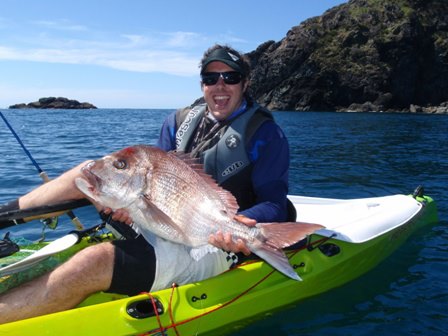Capture the moment | Photography tips
12:05AM 13th Jul 13
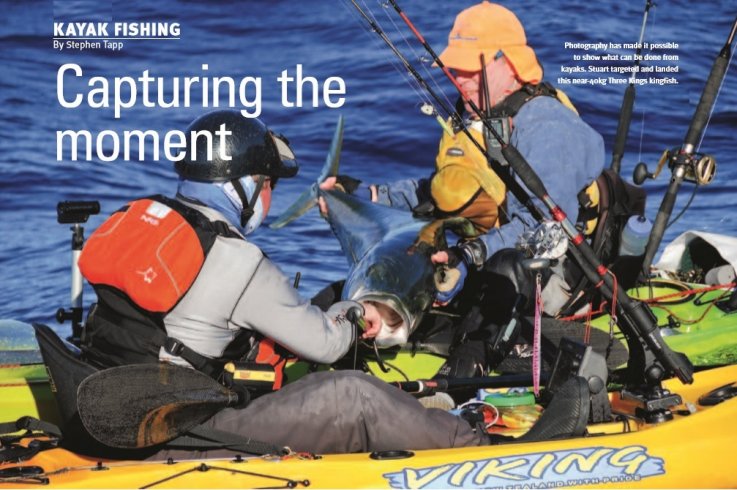
Kayak fishing has grown and matured rapidly as an angling sport worldwide, with the last 10 years seeing a veritable explosion of brightly-colored plastic on the water.
At the same time there have been phenomenal advances in a number of technologies useful to us as paddlers and fishermen. Some have even moved out of the category “you must be crazy to fit that on a kayak” to now being considered routine and almost essential. Fish-finders and GPS navigation systems are a classic example – the level of electronics now commonly carried on many kayaks (and other small watercraft) is the stuff of dreams just 10-12 years ago. Compact and robust enough to cope with being in the harsh, wet kayaking environment, the biggest improvement has been in reducing power consumption to make stand-alone battery operation viable. Another area seeing phenomenal advances is our ability to record the antics we get up to. The advent of compact and affordable digital cameras capable of producing good quality images has made recording our madcap adventures so much easier. In fact, some compact cameras are capable of producing stunning results close to those of larger DSLRs and are certainly good enough to warrant taking a little extra time and care for best results.
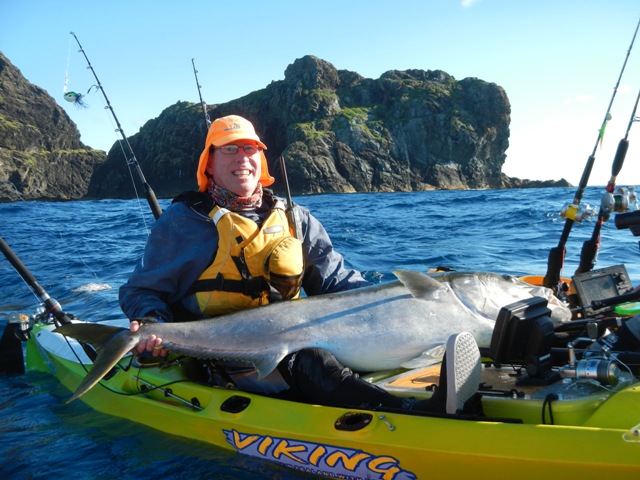
Photography has made it possible to show what can be done from kayaks. Stuart targeted and landed this near-40kg Three Kings kingfish.
Why bother – just point and shoot!
In my early years this was enough. The whole purpose of taking photographs was to prove to the doubters the fish we brought to the weigh-station were actually caught from kayaks. The tools we used were rudimentary (who in their right mind took a decent camera on a wet, salty kayak?). The most common solution was the simple cardboard and plastic disposable, containing nothing more than a roll of film, a fixed lens and a shutter. Snap your photos, send the whole thing off to be developed, and a week or two later a set of prints appeared in an envelope.
It didn’t take long to realize the potential in some of those grainy images. Not only were we capturing images of the fish we landed, we were also recording a whole new perspective of the sport and the coast we enjoy. Discussions with paddling buddies led to the purchase of my first dive camera, a very basic Minolta. The idea was to broaden the kinds of photos we took from the traditional ‘kill shot’ holding another trophy for the lens, to collecting a set of images that told a story. Ultimately this proved hugely valuable: we had photographs to back up our stories of adventure and battles on the high seas (helping excite and attract even more anglers to kayak fishing), and I had the opportunity to learn what it took to get reasonable images from a kayak.
I certainly can’t claim to be a photographer, but there’s no substitute for experience when shooting images from kayak to kayak, with both vessels moving, and you’re trying to keep the lens dry, the shot composed, the horizon as level as possible, all the while trying to stay on top of your kayak! This is where digital cameras became a gift from heaven. In 2003 I bought my first – a Sony DSC-P10 in a sports housing to keep it dry. For the first time I could take multiple images, review them on the water, and later view or print them in high resolution that was even better than I was getting with faster films in the dive camera. Since then I’ve upgraded a couple of times as technology has improved, and the cameras are now capable of doing our sport justice.
Key Lessons learnt
Digital photography has allowed me to take many more images than I could previously afford with film cameras. As a result, it didn’t take long to start learning a few lessons. Using dive housings allowed me to carry cameras on many more expeditions and push the boundaries when conditions were nasty. Outlined below are some of the key points I’ve learnt to get the best from still images when aboard kayaks:
Know your camera:
Make sure you’re familiar with all the camera’s controls before hitting the water. It costs nothing but a little time to experiment, snapping lots of photos at different settings and reviewing them to get familiar with the results. This will help make camera operation instinctive so you can concentrate on shot composition and staying aboard your kayak. The most common problem I see when the action is fast and furious is not giving the camera time to focus before pressing the shutter release all the way (the first ‘step’ on the button allows the camera to set exposure and focus).
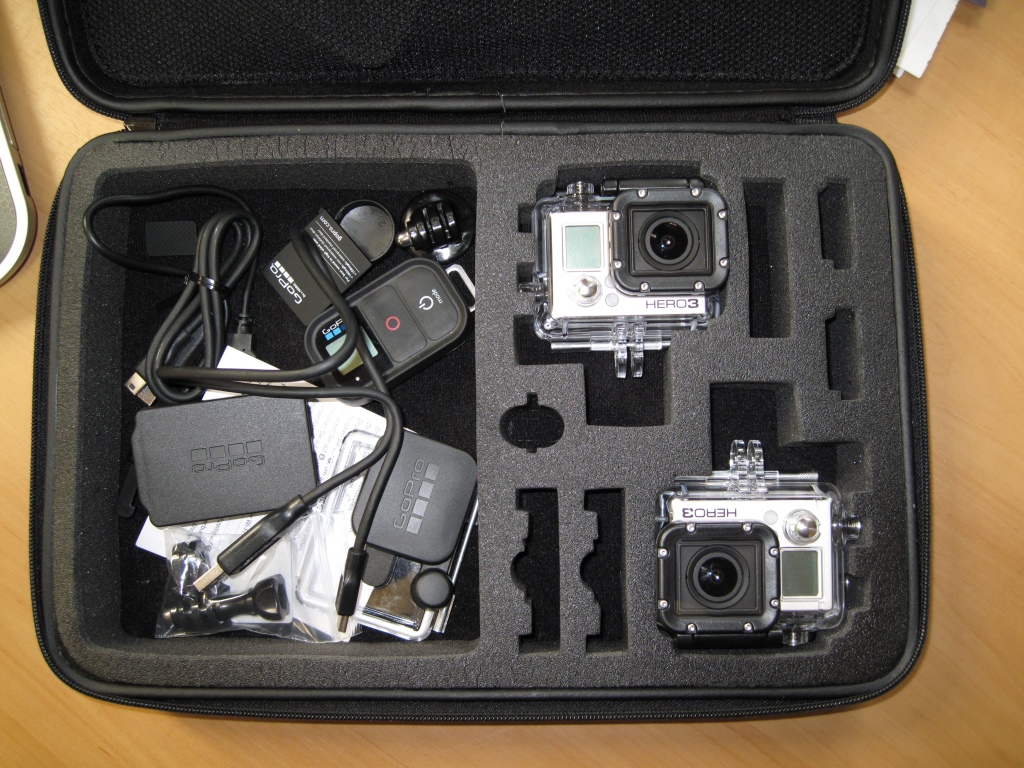
Keep the lens clean:
This is probably the most common mistake I see with kayaking images; a waterproof camera is dragged out of a PFD pocket, the shot composed, and the image taken, but the lens is smeared with salt or a finger mark. In my opinion the worst culprits are those cameras with automatic lens covers, because for many it’s a case of ‘out of sight, out of mind’. Consequently, its good practice to always look at the front of the camera with it switched on before composing the shot, as this lets you see the lens and check everything is clean and ready.
Consider a small Pelican case for waterproof cameras:
This is linked to keeping the lens clean in the point above, but also about keeping maintenance to a minimum. I’ve found storing waterproof compact cameras in a small container significantly reduces the amount of cleaning required to keep them in good order, effectively doubling their life (and, of course, it helps keep the lens clean).
If using a dive housing, find a fitted cap for the lens window:
This is nothing more than a rubber or plastic cap to keep splashes off the front of the housing between shots. There’s nothing worse than a water drop or smear for ruining the best images.
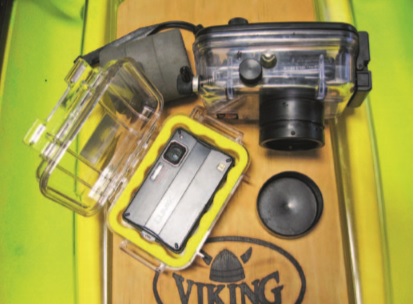
Watch out for fogging:
This can catch you out with both waterproof cameras and cameras inside housings. As a general rule I like to have cameras and housings closed up before dark the day before. If this isn’t possible, it can be a good idea to have a ‘dry box’ to overnight the cameras in. This is nothing more than a plastic storage box with a rechargeable silica gel pack inside to absorb any moisture or humidity. When using dive housings, consider adding mini desiccant packs either designed for the job or acquired from a friendly pharmacy (from the insides of pill bottles)
Don’t forget the fill flash:
A common problem with taking photos on kayaks is the bright daytime light and strong shadows cast by hats and caps. It can be a good idea to leave the flash in the ‘always on’ position to light shadowed faces – but watch out for reflective strips and piping on paddle clothing and PFDs. Another option (and always a good idea anyway) is to get anglers posing for a shot to remove headgear and sunnies.
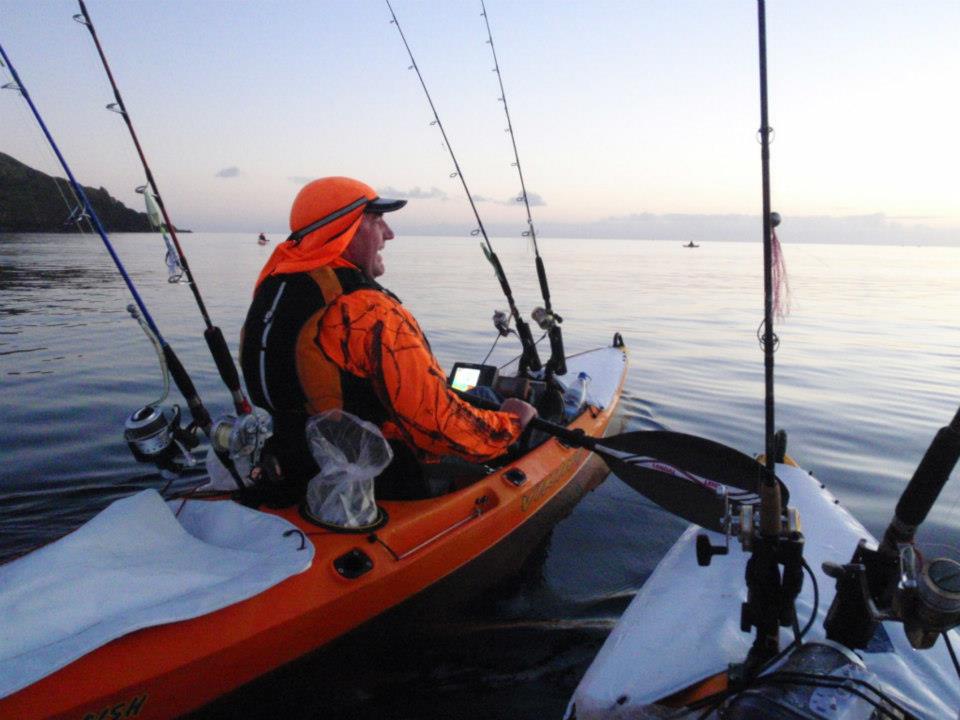
Shot composition:
I’m not going to cover this in detail here, as there are excellent photography courses available that can do a better job than me, but here are two hints I can give: try as much as possible to have your subject lit from the front (have them looking into the sun rather than the sun behind them) and make sure you leave a bit of ‘space’ around your subject so you can crop the image to straighten horizons (remember, both kayaks move around a lot, so it can be extremely difficult to get the composition perfect without cropping).
Make sure the battery is charged and there’s plenty of data storage:
Embarrassing as it is, I have to own up to this one, too – I’ve had a flat battery on a trip to the Far North with no way to charge the camera. At least if the data card is full, it’s usually possible to find a few images that can be deleted, but unless your camera takes replaceable batteries, having a flat battery is going to kill your photography!
What’s next for cameras?
I may be a little old fashioned, but I believe there won’t be a substitute for good quality still images for a while yet. Be they photos or posters for the wall, or images for this magazine, stills are a great way of recording what we get up to and passing on useful ideas and information. That said, digital video is another exciting tool for the kayak angler, and as with all technology, the cameras are improving at a phenomenal rate.
Several of the new generation point- of-view or ‘head cams’ are capable of recording both video and high- resolution stills concurrently, so it’s now possible to have your cake and eat it, too! They also offer brilliantly wide lens angles, making still photography within the confines of your kayak cockpit much easier.
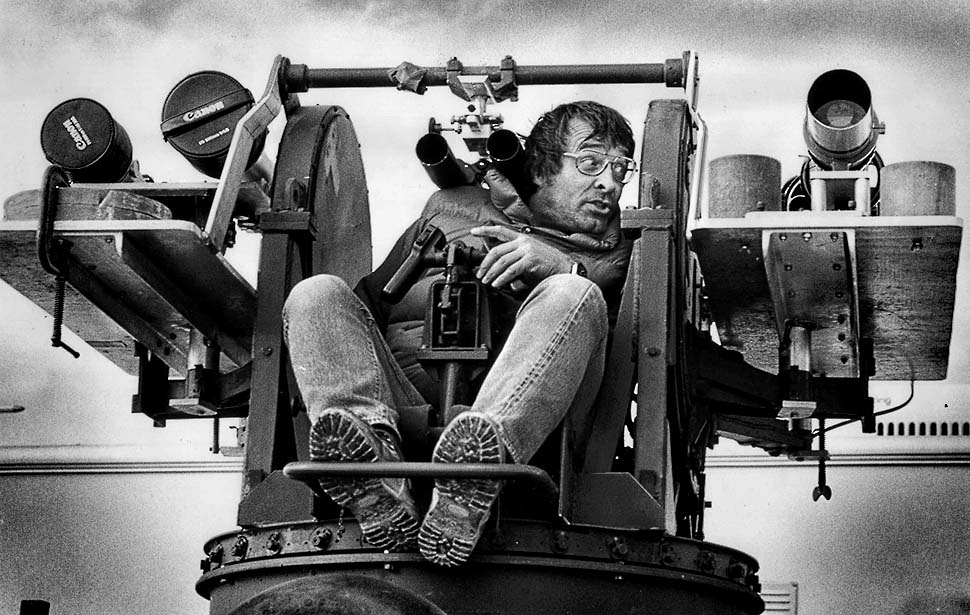
Video photography better conveys the action and excitement of fishing from kayaks. There’s nothing like a clip of ‘Neptune’s sleigh ride’ as a large, powerful fish and loaded rod drag the kayak across the ocean with the wind and a screaming clicker roaring in the microphone. This always gets a reaction out of watchers, and being able to see the excitement and drama of hooking, fighting and landing a big fish is easily the best way to pass on what we enjoy about our sport.
The really cool part is it’s also possible to properly show fish being released. With more and more kayak anglers becoming successful hunters in areas that haven’t traditionally had much fishing pressure before, I believe it’s essential some of what we catch goes back. There’s nothing like seeing a nicely released fish swim to freedom, and helps establish and maintain a catch-and-release culture amongst new anglers.



